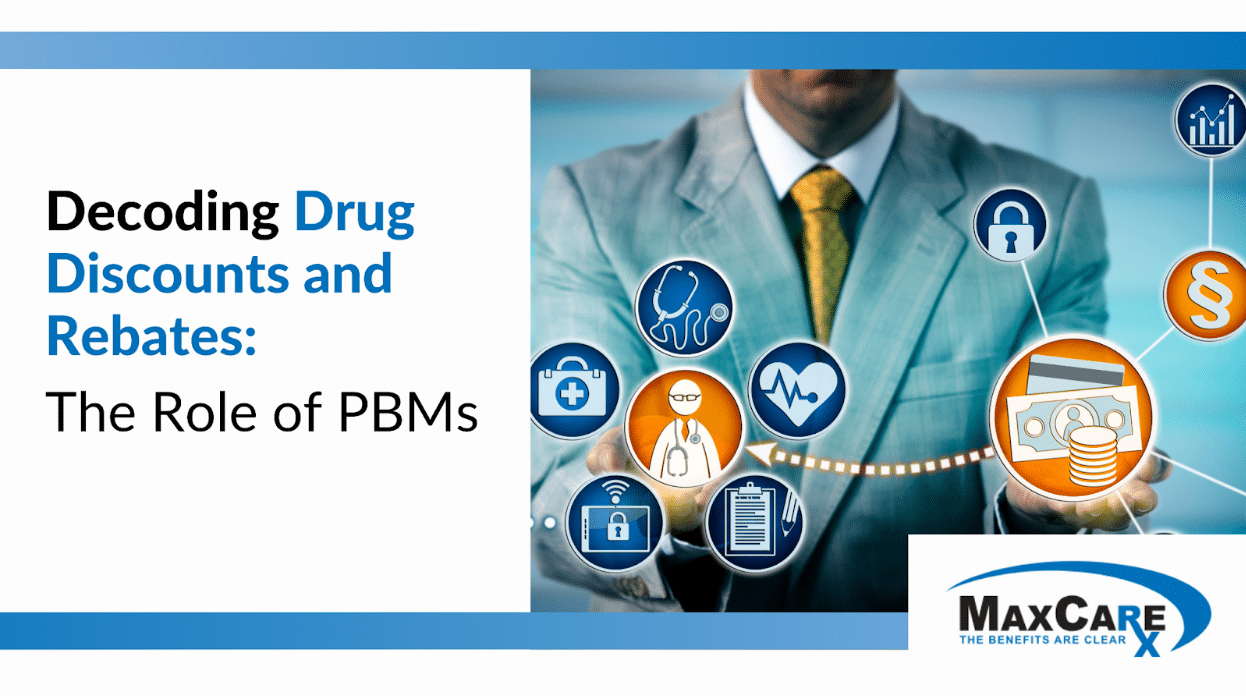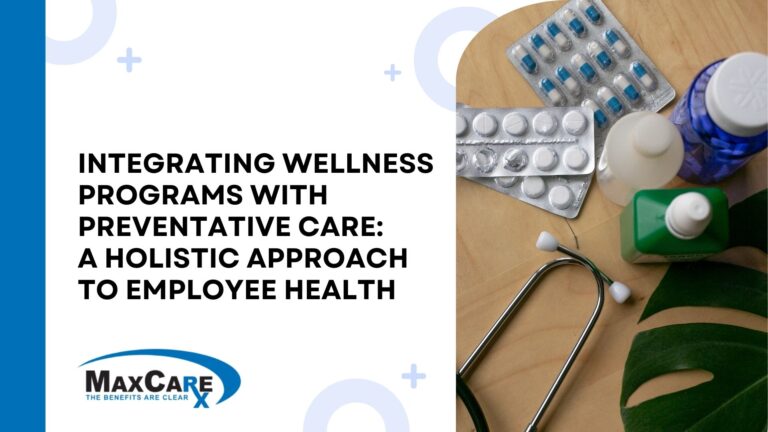The economic burden of prescription drugs extends far beyond the individual patient, spiraling out to the peripheries of the health insurance system, touching and influencing premium costs for everyone. This economic impact, woven intricately with public health and patient care, is too significant to be overlooked.
Understanding the pricing of prescription drugs involves unraveling a complex web of elements, each contributing to the final cost borne by the consumer. One of the most influential but perhaps least understood entities in this web is the Pharmacy Benefit Managers (PBMs). Operating somewhat inconspicuously, PBMs’ roles, responsibilities, and impacts are essential elements to understand when trying to decode the complex terrain of drug costs and healthcare spending.
The pharmaceutical landscape in the United States, while arguably offering a wide range of medicines for various health issues, is often criticized for its opaque pricing structures. Behind the scenes, PBMs play a significant role in shaping these structures. They perform a range of functions, including managing pharmacy benefits, and influencing which drugs are covered by health insurance, to name a few. The specific programs and solutions offered by the PBMs PBMs manage ultimately determine the final cost of prescription drugs for consumers.
Understanding the Role of PBMs
Pharmacy Benefit Managers, or PBMs, often operate in the background but play a crucial role in shaping the prescription drug market. Acting as intermediaries in the complex healthcare system, they serve as an essential bridge linking drug manufacturers, health plan sponsors, insurance companies, and employers. Their pivotal role in the health care ecosystem makes them key players in the overall cost of prescription drugs.
PBMs manage pharmacy benefits plans for a range of clients, including large employers and health insurance companies, directly influencing what drugs are covered by these plans, are preferred or not preferred and at what price.
Further extending their role, PBMs are also responsible for processing and paying prescription drug claims. They contract with pharmacies, deciding which pharmacy chains will be in-network for various health insurance plans. Moreover, their crucial involvement in managing drug discount and rebate programs adds another layer of influence over the final cost of prescription drugs.
The Intricacies of Drug Rebates
PBMs play a crucial role in managing drug rebates. Rebates are essentially a type of post-sale discount that drug manufacturers provide. The rebate agreement comes into play after the drug has been dispensed. It’s a portion of the drug’s cost that is returned to the PBM after a prescription has been filled.
The concept of drug rebates involves complex negotiations with pharmaceutical manufacturers. The aim is to secure a substantial portion of the drug’s cost back once the prescription has been filled and the drug dispensed. Rebate programs are prevalent particularly with branded prescription drugs, where pharmaceutical companies offer PBMs rebates to secure a preferential position on their formulary – the list of drugs covered by the health insurance.
However, despite the perceived benefits of drug rebates, such as reduced net drug prices for health plan sponsors and potentially lower premiums for insured members, there is substantial debate surrounding the transparency and distribution of these rebates. Critics argue that savings from rebates often don’t trickle down to the patients, with those having high out-of-pocket costs not benefiting substantially from these arrangements.
Drug Discounts and Their Impacts
In addition to rebates, PBMs also manage drug discount programs. These programs aim to provide medications at a lower cost to the consumer, particularly those who lack health insurance or have high out-of-pocket cost insurance plans. Drug discount programs work by offering a reduced price at the point of sale, which can have a direct impact on the out-of-pocket cost for the consumer.
The goal of both discounts and rebates is to reduce the overall cost of prescription drugs. However, they have distinct impacts on the health care system. Drug rebates, while reducing the net price of drugs for health plan sponsors, often benefit insurers and employers more than individual consumers. Drug discount programs, on the other hand, provide direct savings to consumers, making medications more affordable at the point of sale.
How PBMs Influence the Health Care System
The role of PBMs extends beyond managing drug rebates and discounts. As key players in the healthcare system, PBMs have a profound impact on population health, health disparities, and the quality of care. Through their utilization management programs, PBMs can influence prescribers behavior and medication use, directly impacting health outcomes.
However, despite their significant role, PBMs have been the subject of criticism for their lack of transparency and potential for conflicts of interest in their roles as intermediaries in the drug supply chain. Many argue that the complex rebate and discount negotiations can create an environment where PBMs may prioritize their profits over the best interests of the patients. This is where the role of regulations and oversight becomes significant.
The Role of Regulation in Addressing PBM Challenges
Regulation plays an important role in addressing the challenges associated with PBMs. Transparency in PBM practices, particularly regarding drug pricing and rebate payments, can be significantly improved through regulatory measures. Policymakers could establish guidelines requiring PBMs to disclose details of their negotiations, pricing strategies, and rebate amounts, helping to alleviate some of the criticism around opaque pricing structures and practices.
Increased regulation could also address potential conflicts of interest and anti-competitive practices. Regulatory oversight could limit the potential for PBMs to prioritize their profits over patient needs. For instance, regulations could restrict PBMs from steering patients towards drugs or pharmacies in which they have a financial interest, a practice that could limit consumer choice and potentially inflate drug costs.
Increased transparency and regulation alone, however, may not be enough. Integrating data analytics into PBM operations can potentially improve their efficiency, transparency, and accountability. Data analytics can help track drug spend and total drug spending effectively. This can lead to more efficient resource management, potentially resulting in savings for both health plan sponsors and consumers. PBMs can also use data analytics to identify patterns and trends in drug usage, helping to better manage pharmacy benefit plans and contribute to improved health outcomes.
Value-Based Models: Shifting the Focus to Quality of Care
Adopting value-based payment models is another potential strategy to optimize the role of PBMs. These models, which tie payment to patient outcomes rather than the quantity of services provided, could potentially shift the focus from quantity to quality of care. In the context of PBMs, value-based payment models could influence them to prioritize the efficacy and cost-effectiveness of drugs, leading to improved health outcomes and potentially lower healthcare costs.
Such models would require PBMs to work closely with drug manufacturers, healthcare providers, and health plan sponsors to develop and implement effective strategies. This could include creating innovative payment arrangements, such as paying higher prices for drugs that result in better health outcomes or incorporating patient satisfaction and quality of life measures into payment structures.
Effective Approach to Ensure You Achieve the Lowest Net Cost
While it’s easy to focus solely on rebates and discounts when trying to reduce pharmacy costs, there’s actually a much more effective approach to ensuring you’re achieving the lowest net cost. It’s about implementing comprehensive cost containment strategies and working closely with your pharmacy benefit manager (PBM) to identify the most efficient solutions.
Rebates and discounts can surely bring down the cost of prescriptions, and for many people,
these are the most visible representations of cost savings. They offer the advantage of providing instant monetary returns, which is why they are often a focal point. However, they only represent a small piece of the cost management puzzle.
If we focus solely on rebates and discounts, we may miss the larger picture. Firstly, rebates often don’t get to the actual end user and instead benefit the middlemen. Secondly, heavy reliance on rebates may lead to favoritism of high-priced brand name drugs over equally effective and cheaper brand and generic alternatives, which can elevate costs in the long run.
This is where a lowest net cost approach comes into play. It’s an approach that looks beyond rebates and discounts and into more strategic ways to manage costs. The goal here is to achieve the lowest possible total cost after all factors are considered, such as administrative fees, dispensing fees, and the actual cost of medication.
PBMs can play a significant role in enabling this approach. For instance, they can help design a plan that promotes the use of generic drugs or preferred brand-name drugs. These drugs are usually included in the formulary, a list of covered drugs, as they’ve been proven to be effective and cost-efficient. This approach can yield more substantial savings over time compared to a strategy focused solely on discounts or rebates.
Furthermore, PBMs can also use clinical programs to manage the use of high-cost drugs and ensure that members are receiving the right drugs for their conditions. In addition, PBMs have data analytics capabilities to track drug utilization and costs, which can help in creating more targeted cost-saving strategies.
Navigating the Future of Drug Pricing
While rebates and discounts can certainly provide some cost savings, they shouldn’t be the sole focus. It’s crucial to look at a more holistic, lowest net cost approach that leverages the capabilities of PBMs, promotes the use of cost-effective medications, ensures medication adherence, and uses the most appropriate channels for dispensing. By doing so, we can truly optimize and achieve long-term, sustainable control over pharmacy costs.
The complexities of drug pricing, rebates, and discounts, along with the crucial role of PBMs in shaping these processes, underscore the importance of understanding this multifaceted field. With ongoing debates about drug pricing reforms, health equity, and the affordability of healthcare, the role of PBMs is increasingly under scrutiny.
To navigate the future of drug pricing, it is essential to strike a balance that ensures accessibility, affordability, and quality of care. This requires collaborative efforts from policymakers, healthcare providers, pharmaceutical manufacturers, and PBMs themselves. Transparency and regulation can help address concerns related to conflicts of interest and the lack of pricing visibility. Integrating data analytics into PBM operations can optimize resource management and contribute to more efficient and cost-effective drug utilization. Furthermore, value-based payment models have the potential to shift the focus towards patient outcomes, promoting better health outcomes while managing costs.
By optimizing the benefits of pharmacy benefit management and addressing the challenges it poses, we can aspire to build a healthcare system that ensures equitable access to affordable prescription drugs and quality care for all individuals. It is a collective endeavor that requires ongoing dialogue, collaboration, and a commitment to the well-being of patients and the sustainability of the healthcare system.



